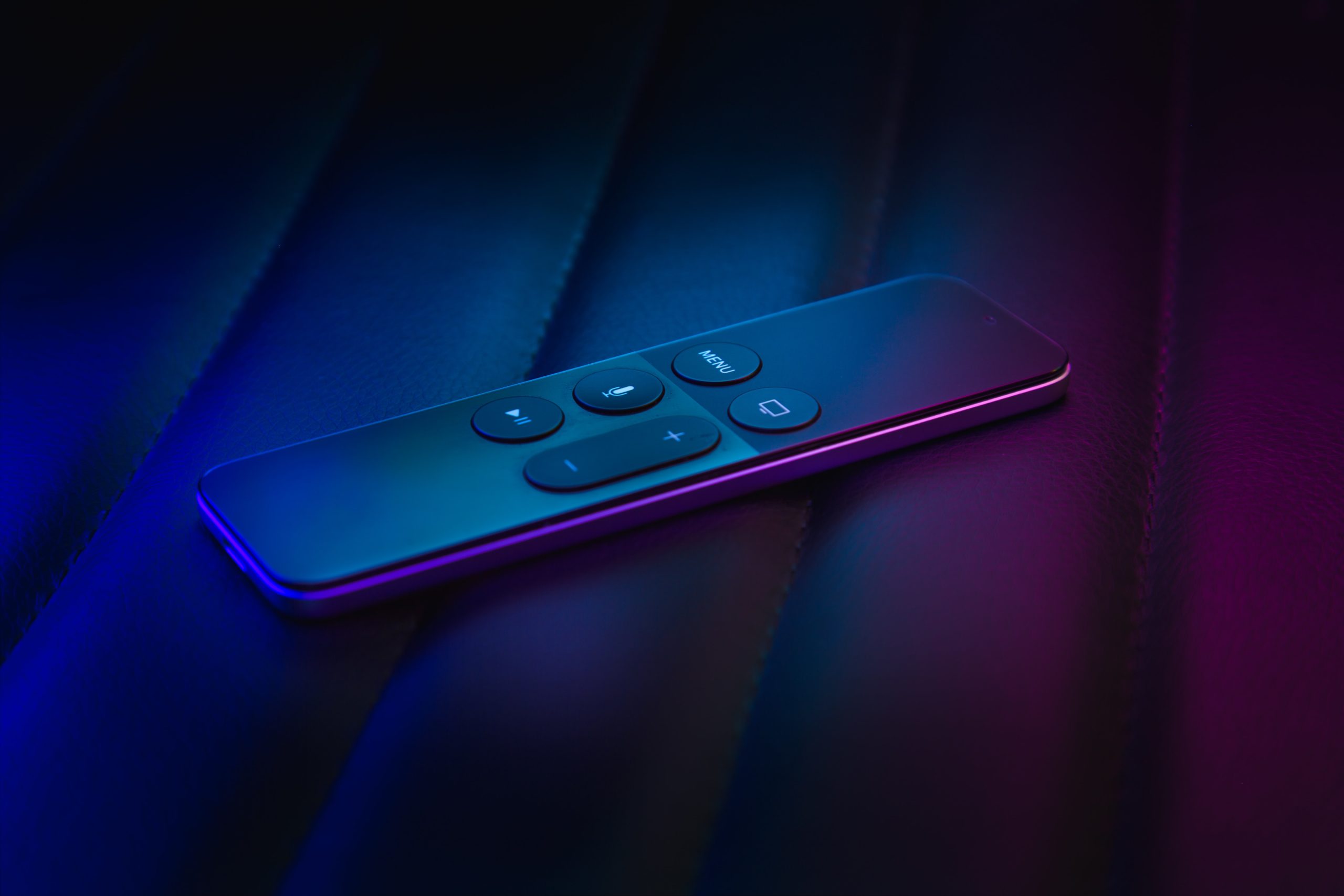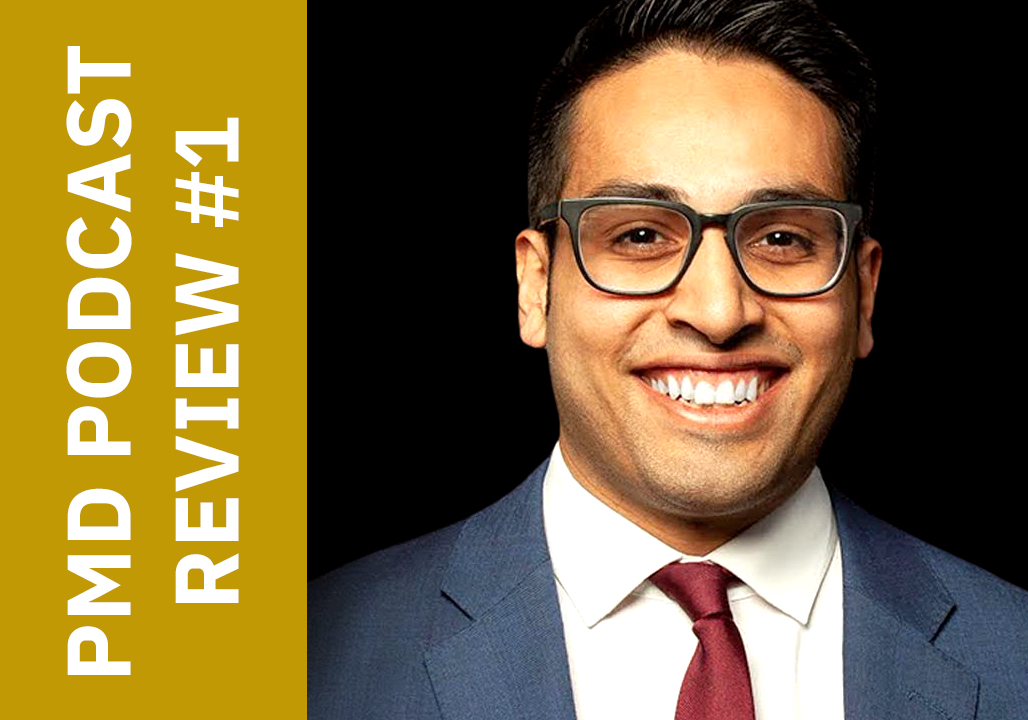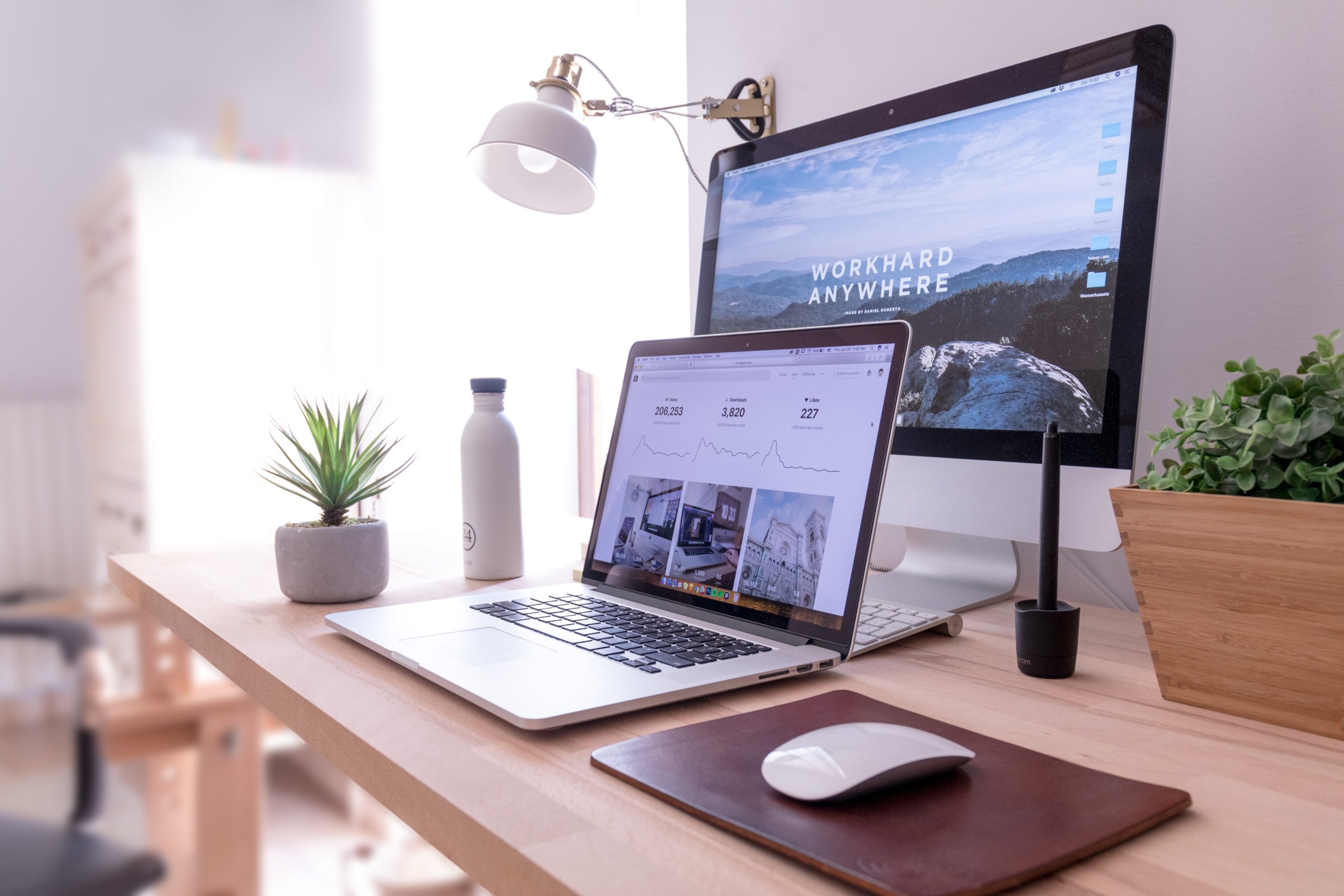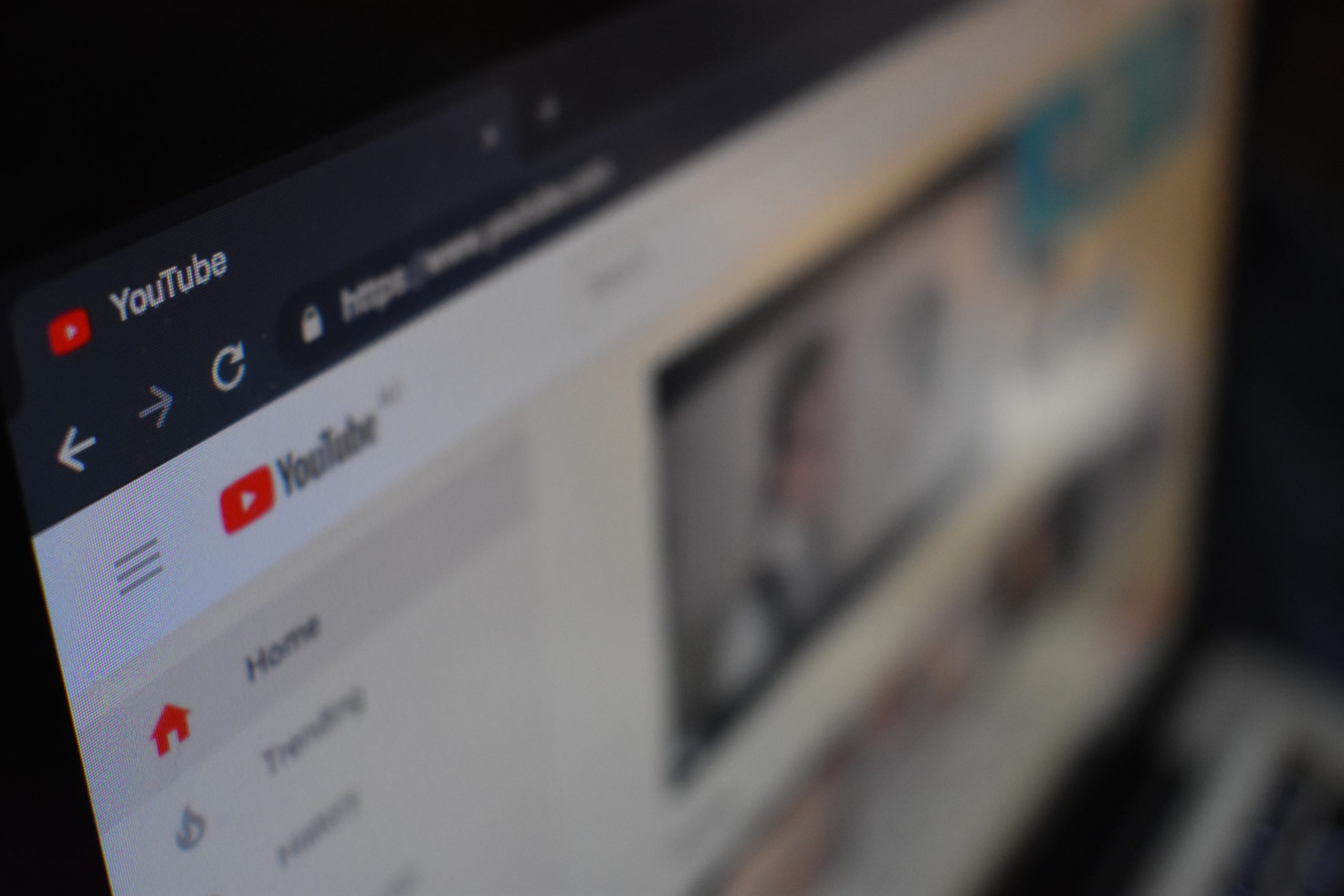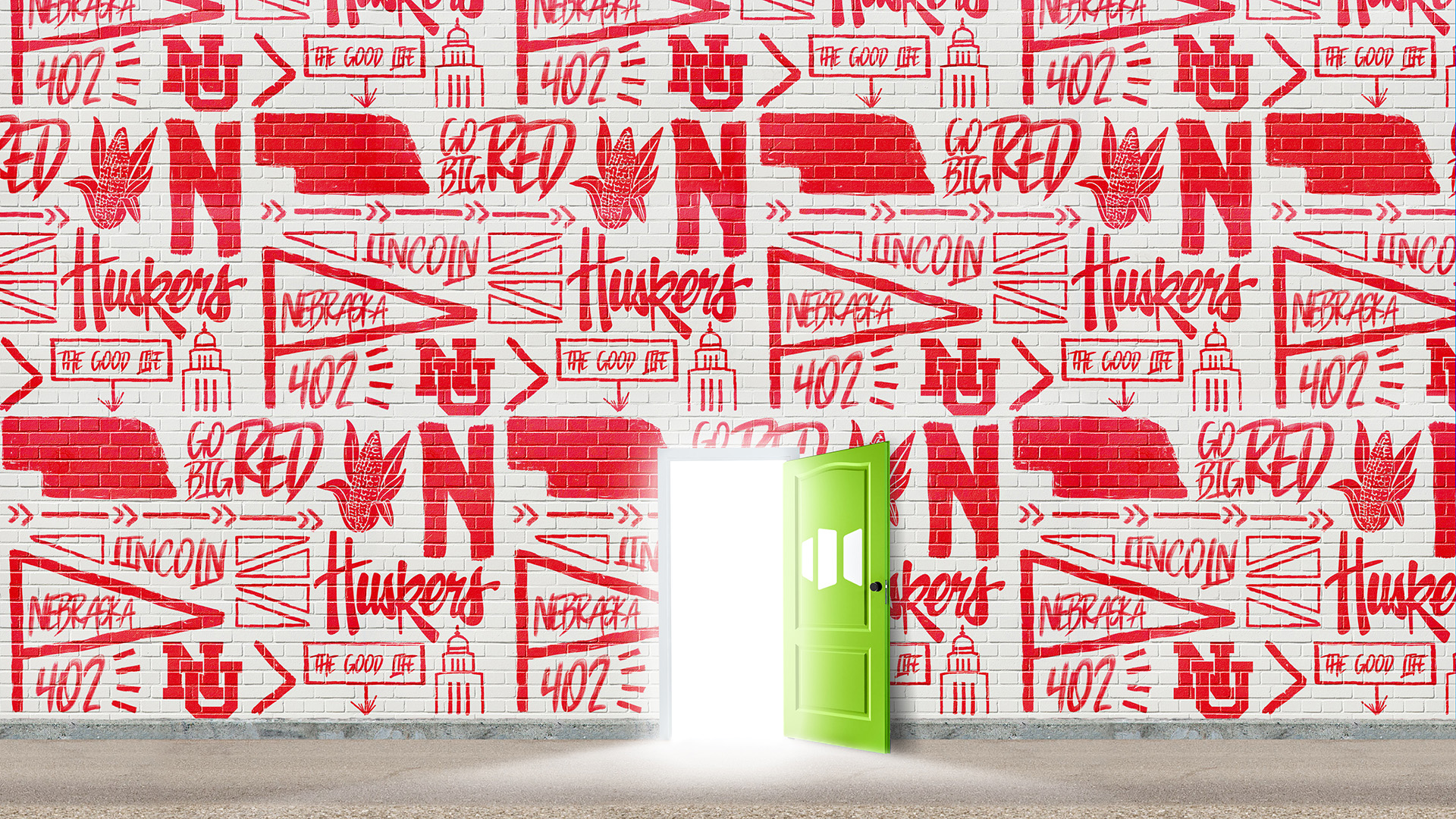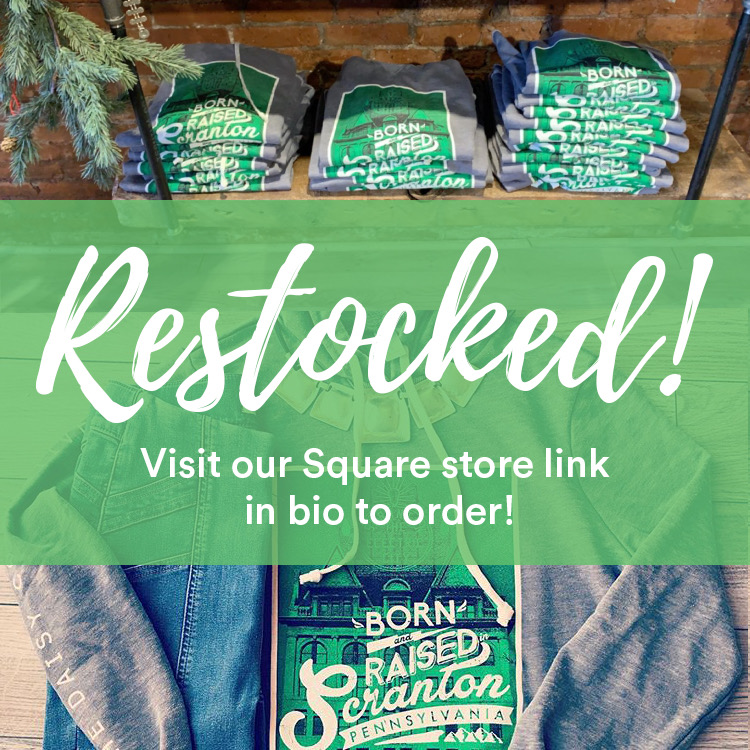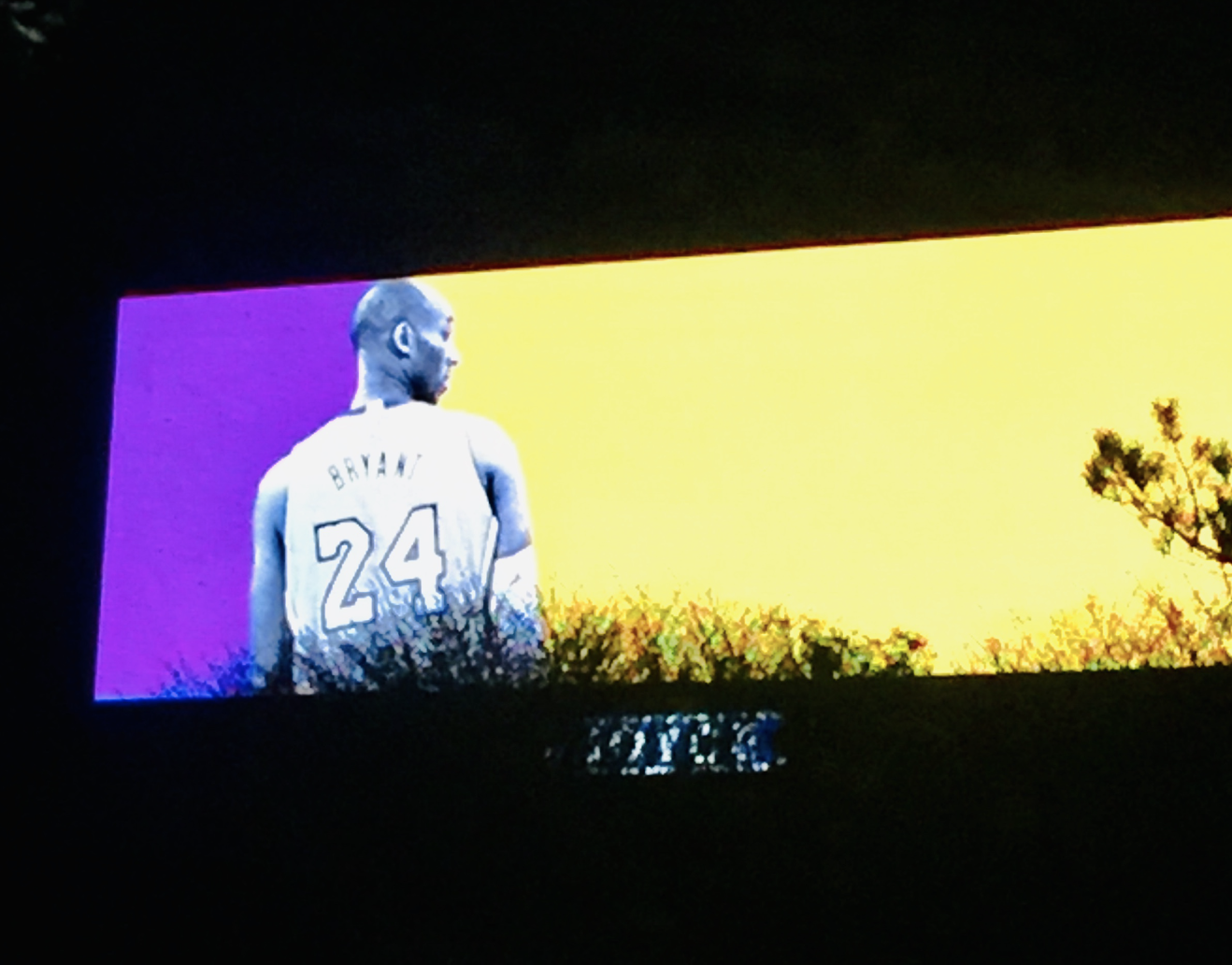The Hick-Hyman Law of User Psychology
Also known simply as Hick's law, The Hick-Hyman Law is the idea that describes the time it takes for a person to make a decision as a result of the possible choices; increasing the number of choices will increase a user's time to make a decision.
In William Edmund Hick and Ray Hyman's own words: "The time it takes to make a decision increases with the number and complexity of choices"
A useful example of this is an Apple TV remote. The touch surface of this remote is 6 buttons total. The typical TV remote has 49 buttons. This results in significant time wasted trying to locate simple buttons or perform desired actions. Most will say, 'it's a remote, who cares, it takes two more seconds to find the info button, for example' This is true. But in the context of great user experience and user interface design, incorporating this user psychology hack could be the difference between making a sale or a visitor getting frustrated and leaving your site or platform.
Reduce the decision making process and hide less important options. Minimize "cognitive load" for users by breaking up long or complex actions into screens that contain fewer options. A great example of this is Typeform. A step by step contact form that creates this experience of an actual conversation that keeps your user engaged by prompting individual questions.
User empathy is key in creating great user experience and the Hick-Hyman Law is no exception.
Website Process: From Idea to Launch
The single most important ingredient in any website build or any digital asset you produce is your process. A process is defined as procedure, proceeding apply to something that goes on or takes place. Everyone has their own unique process that they’ve developed through a combination previous experiences, both good and bad, and education.
My process begins with a very simple task:
1. Listen
First, sit down with your client and make a personal connection with them. They’ve never worked with you before and need to understand how you think and operate in order to trust you along the way. In my experience, you can save yourself a ton of time and headaches down the road by simply listening to your client’s issues and coming up with a tailored solution to their problems. Let’s face it, they’re not coming to you if everything is great for their business. Listen and understand why things aren’t working.
2. Strategize
After you have a really good handle on the exact problems you need to solve, the next thing you’ll need to determine is where the content for the site will be coming from. Will the business owners be writing it? In that case, develop a thorough questionnaire that pulls together the product and service offerings of the business and why they are different from any other business in their specific industry. Then, you’ll need to conduct market research. Find 3-5 “benchmark” sites in their industry that will serve as your guide along the way. Take notes. What’s working? What can be improved? Dribble is a great resource for inspiration.
3. Design
Once you have a good baseline of content to work with from your client and a good handle on what works in their particular industry, now it’s time to start designing.
Start with wireframes. Essentially all you’re doing here is sketching out basic shapes and text in order to determine what goes where in terms of text and image placement. “Call to actions” will drive the entire user interface of your new site. Visitors need to be show and told what you want them to do on your site. Each main section needs a call to action that answers the question “What do I do next?” I use Photoshop to map typically 3-5 top level pages on the site. Home, primary service page, secondary service page, team page, and contact page to name a few.
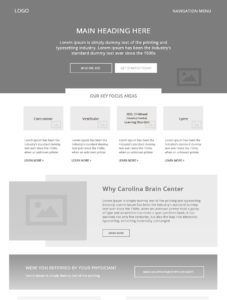
Once you have your wireframes in place, now it’s time to piece together mockups, that serve as the user experience for new site visitors. What will the navigation look like? What type of photos will you be using? What are your primary cta’s and user flow elements that guide users down an intended path to learn more about the business, buy a product, become a customer, or submit information for a consultation? You’ll need to have these elements in place before any building happens. Color, typography, movement and animation, each element has a role to play in getting visitors to perform desired actions on your website.
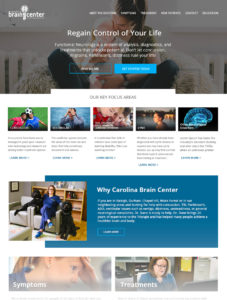 4. Build
4. Build
Take your mockups and begin to develop your site using your particular CMS (content management system) platform. I use Wordpress for each of my sites, and in particular, I build with Uncode, a completely customizable “endless” them that allows me to develop my wireframes pixel by pixel. After all, your website is a content engine. Wordpress is geared towards ongoing content injection over time to grow your site and attract visitors. If you are outsourcing to a developer, make sure to export each layer and asset of your mockups and compress them into a folder so your developer receiving them can work efficiently, and most importantly, build to the exact specifications of your interface designs and strategic user flow.
I’ve worked with developers of of all shapes and sizes. In my experience, the more detail oriented you can be in your asset naming, the better. If you’re developing the site yourself, make sure to consider the user experience on all major devices. “User empathy” is key in providing an experience that does not degrade, for example, from desktop to mobile. 60% of all site visitors (industries vary) come from mobile users. “Mobile-first” websites are not just for certain industries anymore, they are the norm.
5. Launch
Once your build is in place, using your client or questionnaire generated content, branding, contact forms, buttons, etc, now it’s time to test. View the site on your phone, laptop, desktop, and in all major browsers to make sure you’re covering all your bases. Act like a customer. Would you buy their products? Would you work with their company? Do you trust them? Be totslly honest here.
You’ll also need to configure any SEO/ Google Analytics tools on the site in order to monitor traffic sources, and most importantly, iterate in the future. No site is etched in stone. The key is to track time on site, bounce rate, traffic sources, keyword ranking, and site speed in order for search engines to properly index your client’s site and position their business for growth.
Once your client gives you the green light to launch, configure your domain, install your SSL certificate for increased security, and update your staging site urls to reflect “https” on each page.
A well diagnosed process goes along way in solving a client’s problems. Your process makes your job easier and keeps you efficient along the way with little wasted time and effort. You’ll be using your design “blueprint” (wireframes and mockups) as your guide to ensure your site operates smoothly. After launch, you’ll monitor traffic, help your client dominate their industry, and engage with their customers.
PMD Podcast Review: ALL-IN Podcast E26
The All-In Podcast is hosted by venture capitalist veterans Chamath Palihapitiya, Jason Calacanis, David Sacks, & David Friedberg. They cover all things economic, tech, political, social & more. Why am I listening to this podcast? I heard Jason Calacanis on the Lex Friedman podcast and found myself interested in his perspective on tech, entrepreneurship, and his past successes investing in companies such as Twitter, Facebook, Zynga, Square, and Medium. Go check out that podcast if you'd like to learn more.
But in this particular podcast that All-In puts out weekly, Jason had a quote towards the end of the episode that I loved. He basically ended the show talking about how the resources to grow a business, learn a new skill, re-invent yourself, and become undeniable to employers, investors, and ceos are there for the taking in 2021. Bootcamps, Youtube, and podcasts are literally in our pocket and there to be taken advantage of if you are just willing to sacrifice and learn. Check out what Jason had to say and the link to the full episode if you'd like to check it out:
“All the answers are out there if you want to start a company. All the skills are freely available, you can learn anything online. You may believe that the world is filled with racism, and inequality, and racism, and you’d be right. But any skill can be learned. Capital is available now more than ever. There is a clear path for you if you just stop watching Netflix and learn to be a UX designer, a sales exec, a marketing and growth executive, or developer you can change the world and change your lot in life. Dont buy into this victim mentality that everyone is stupid and nobody can learn. GO GET IT. ”
https://www.youtube.com/watch?v=hEVLyPwJAZQ
PMD Podcast Review: Lex Fridman Podcast with Saager Enjeti
My thoughts on Lex Fridman's Podcast with Saager Enjeti
I’m going to be doing a new post category each week based on podcasts I’m listening to. This past weekend, I listed to the Lex Fridman Podcast with Saager Enjeti. Lex Fridman is an MIT researcher/scientist that I originally discovered on Joe Rogan’s podcast. He releases a few new episodes per week and cover a wide range of topics including artificial intelligence, machine learning, tech, finance, and much more.
Saager Enjeti, co-host of the The Hill’s Rising news show, was a guest this past weekend and it was one of the more interesting podcasts I’ve listened to in a long time. Saager is a DC-based, conservative-leaning, political correspondent, which may differ from my personal opinions, but his honest, objective takes on the current political landscape (check out The Hill on Youtube, literally my main news source right now), power players in government, and general cultural commentary is a breath of fresh air in the time of polarizing, political opinion designed to sensationalize the news stories of the day in order to get clicks instead of finding actual truth.
Saager goes in depth on the balance of power in government, the current divide between Left and Right, the drive of the human spirt (his book recommendations include “Endurance: Shackleton’s Incredible Voyage” which sounds badass), the difference between influencers and content creators, political predictions for 2024, and much much more.
Overall, really interesting guy that is an up and coming figure in news media that I listen to pretty much every day but didn’t know much about personally. Now I’m an even bigger fan.
Check out the entire interview below and hopefully you get as much out if it as I did:
Launching Your Website with a "Go-Live" Checklist
When launching any new website, there’s a few key items that you’ll need to make sure are buttoned up to make “going live” as smooth as possible. Each hosting platform has their own unique process but or the most part, each of the follow items carry through for any proper launch. My list is based on my preferred Wordpress Web Hosting platform, WP Engine, and their standard operating procedures when it comes to getting your website live and technically sounds for traffic and growth.
Add Your Primary Domain and Link to Staging Environment
Whenever a website is being constructed, purchasing a proper domain (www.businessname.com) is key. During that new build, your website sits in a “staging environment” which is essentially a construction location that is de-indexed by search engines and off the map until your site’s domain is ready to be set. Users will access your new website by visiting your website’s address which will display the front page of your new site when your primary domain is added to your environment.
Configure Your Domain’s DNS Records
With each domain, your registrar (manages reservation of internet domain names or “addresses, examples include GoDaddy and others) will need to be accessed to configure your domain name server records, specifically your “A Record” and “CNAME” Record. Your A Record serves as a connection from your domain to an IP address, which is provided for each hosting and staging environment. It tells your website host to “show this page” when someone enters your domain into a browser. Your CNAME aka “Canonical Name” is used to connect one domain name to another. For example, a CNAME can map a connection from www.businessdomain.com to businessdomain.com (both using the same IP address)
In short, DNS records ultimately connect your domain to your website’s hosting environment.
Configure Your SSL Certificate for Additional Site Security
Every website needs an added layer of security to facilitate an encrypted connection between site visitor and server. An SSL (Secure Sockets Layer) Certificate is free with a WP Engine hosting plan and serves as a secure protocol for exchanging information on the internet. This is reflected in the “HTTPS” and lock icon you see at the beginning of all secure site urls in your browser.
Google began penalizing sites without SSL’s as far back as 2014 as a “weak ranking signal”, making it paramount to make sure your website is covered.
Update Website URLs
Now that your domain is pointed at your new website environment with a secure connection, you need to make sure all instances that your domain appears now reflects the new domain. For example, if your staging site used the url mybusiness.staging.com while under construction, you’ll need to make sure all internal links within your Wordpress environment are located and replaced with the new domain. Simple tools like “Better Search Replace” can be implemented to expedite this exercise into a few clicks.
Also, if you’re going from an old subdomain or implementing a new domain all together, you’ll need to let search engines know where the new site lives. Setting up permanent redirects within your .htaccess file is preferred in order to “redirect” traffic to your new location.
Now that your site is fully “live”, you’ll want to start driving traffic by optimizing each of your site’s pages for search engines (title tags, meta descriptions, etc), creating sharable content that includes prime keywords within your industry, and using social media advertising to engage and discover new potential customers that have already shown interest in your businesses through previously visited websites, and internet activity that fits your target audience.
Contact me today to learn more about how your business can navigate the web in 2021 and beyond using your website as the main hub to attract, engage, and convert users into customers and grow your business with trackable, scalable metrics.
Why Every Lawyer Needs A Youtube Channel ASAP
There are roughly 50,000 lawyers in the state of Pennsylvania alone according to the Pennsylvania Bar Association. What this means is that your potential clients have options when looking for their next personal injury lawyer or child custody attorney. But how do you break through and differentiate yourself from the pack?
The answer to that question lies in not only how well you market your unique selling proposition (what makes you different) to potential clients, but how you 1. effectively build valuable content around your brand and 2. how accessible that content is to your audience.
Users are consuming video content more than ever before. Since 73% of US adults use YouTube, your customers are already watching YouTube videos and subscribing to their favorite channels, now it's just a matter of getting in front of them. But why is YouTube effective for lawyers and law firms specifically?
1. Content Retention Rate
People engage with video at a higher rate than any other piece of content. Viewers retain 95% of a message when they watch it in a video compared to 10% when reading it in text, such as a blog article or social post. By creating 30 second to 5 minute videos answering specific "frequently asked client questions" or simply "what to do if you find yourself in X situation", your not only creating valuable content for your audience, your presenting it in a highly effective, digestible form that people are much likely to recall in situations of anxiety or stress. Like after a car accident or domestic dispute. Staying front of mind for your audience is key in breaking through the noise and being someone's "go-to" legal advisor.
2. Brand Personality
A Youtube video literally mimics a one on one conversation with a client. Your audience can get an idea of your personality, experience, and commitment to their needs when they consume your content visually. Searching for trusted legal advice can be intimidating for a client. They're not even sure where to start and typically wonder how they can be totally sure the lawyer they choose will "treat them like family" as promised in one of their articles or billboards. Dispel that idea immediately by showing them you're the expert in your specific niche. Building trust only happens through thoughtful communication. Attorneys that provide actual value for their audience before any selling happens is a great way to maximize brand awareness and increase leads for your practice over time.
3. Low Barriers to Entry
Building video content does not have to be difficult. You don't need expensive equipment or a video production company that often warrants a lofty price tag. All you need is a smart phone, good lighting, and a valuable message for your audience. That's literally it. Think of this as planting seeds with your first few videos and then growing over time along with your business.
Hopefully after someone watches your video, they'll be interested enough to then check out your website. That's why each video should include a CTA (call to action; your viewers need to act in some way after watching like visiting your website or subscribing to your channel for future videos), and a brief description of the video's contents that include additional keywords like your town, specialty, and common cases you litigate. This makes you more accessible when searched and maximizes the value of the platform.
In conclusion, I can't stress enough how important it is to provide value to your customers and establish yourself as a thought leader in your industry. This goes for any professional looking to grow their business, not just lawyers. Just as I'd like to be the "go-to digital specialist" for your law firm, you want to establish yourself in our area as the "go to lawyer" of X specialty. The advantage you'll have over the lawyers and firms that are simply relying on outdated marketing channels that are just so saturated and full of noise is only increasing. Cut through and actually give people a chance to find you by creating thoughtful, personal video content that will resonate with your audience in places they are already looking.
*If you find this or any of my articles valuable, please share with colleagues and friends by clicking any of the share icons below.
3 Ways Businesses Can Embrace Digital in A Post-COVID Environment
In an interview for the Philadelphia Cricket Club's "Cricket Conversations" series, former GrubHub President and Seamless CEO, Jonathan Zabusky gave his thoughts on the direct to consumer industry and how he thinks various platforms will radically transform the ways restaurants and small businesses interact with customers as we move forward in a post-COVID 19 environment.
Zabusky began his career with the Boston Consulting Group before he joined Aramark in 2007 and eventually became CEO of recently acquired Seamless. Seamless is an online ordering platform that allows users to receive delivery and personal takeout orders from restaurants in cities like New York City, Miami, and Chicago. With the rise of mobile commerce and 3rd party delivery services in the early 2010's, Seamless merged with GrubHub in 2013, where Zabusky would eventually serve as the company's president.
Direct to consumer mobile ordering opened the door for 3rd party companies like UberEats, Doordash, and more. Zabusky goes on to discuss the shift from the outdated ways of "marketing" restaurants to customers that included "shoving menus under doors" to the natural progression of these platforms essentially becoming the digital marketing arm for these businesses. In offering a delivery service for restaurants, they were also allowing brands to push their marketing messages to the masses, connecting and maintaining relationships with existing and new customers through email campaigns, while also building a world class online ordering experience. Increasing reach and improving efficiency on behalf of these restaurants is really the purpose these ordering services provide.
This digital shift that we expected to occur over the next 4-5 years has been sped up by significantly COVID-19. Customers want to feel safe and brands want to do their part to show their communities they are taking all the proper precautionary steps while also extending their digital footprint, with their larger audience just a few clicks away.
''90% of guests research a restaurant online before dining—more than any other business type." - upserve.com
If your customers can't find you, they can't support you.
Here are a few ways I think businesses can embrace this new normal as an opportunity not a threat, connect with their customers, and position their brand for post COVID-19 growth.
1. Define your business goals
I think the best place to start is with the actual goals of your business:
- What are the most important problems you're facing?
- Are you looking for more customers?
- Do you want to strengthen relationships with already existing customers?
- Did COVID-19 force you to let some of your employees go due to lack of revenue?
From there you can zero in on the things that are holding your business back and begin to take steps to correct them.
2. Establish your digital footprint
Listen. Wether your goals are covered in any of the questions above, one thing they all have in common is that your business needs to be accessible to your customers online. And the first places they will look is in search, social media, and these 3rd party platforms we talked about earlier. Wether it's building a social media profile, creating a website, or integrating your business with a 3rd party platform like GrubHub, Ubereats, or Square, your customers need to be able to find you in order to support you.
As Jonathan describes in his interview, these platforms are great for allowing restaurants and businesses to offer online delivery services to reach a whole group of delivery-specific customers that you'd otherwise never connect with. But with these platforms, comes monthly commissions and delivery fees that can interfere with the relationship between a customer and a business. But finding new customers through these platforms is a great way to establish your presence and then slowly transition into applications that integrate directly into your businesses website to allow for a more seamless and direct to consumer experience. 70% of consumers prefer to order directly from restaurants, not third-party services according to statistics published by hospitalitytech.com.
3. Grow with your audience
Once your customers can interact with businesses directly from their smart phone, tablet, or desktop with a user-friendly ordering platform or website, you can begin to analyze how you can improve your brand experience and cater to your customer in more ways than just serving them a great product. You can now begin to collect user generated content like customer reviews to improve your product, market to existing and new customers through email campaigns and social media marketing, and track that data to pivot and improve your relationship and become more efficient as you focus on the day to day operations of a business.
Jonathan also mentions something very interesting about his experiences in NAPA Valley at various wineries and the idea of a contactless dining experience. One way of doing this is by setting up seating areas that include QR codes (formerly iPads on tables) directly on tables in front of customers that allows them to take a picture of the code and instantly launch the restaurant website on their mobile device. This makes a ton of sense for restaurants and businesses that require patrons to think through their choices and educate themselves before any decisions are made. Especially in restaurants with a menu that changes often or requires a library of information for a server to remember. A QR code allows the customer to read through detailed menu options, see where the ingredients came from, and more. This is a customer oriented approach to the dining experience that I can't help but think will be part of this digital shift going forward.
In conclusion, Jonathan really does a great job of not only establishing the fact that the restaurant and hospitality industry is changing to a more customer driving digital experience, but outlines exactly how these businesses can reinvest resources from the traditional, in person experience that will have people weighing their health and safety going forward. And as businesses begin to reopen, you need to be at the very least considering some of these reallocations of resources to a more safety-focused, contactless dining experience, either from home or in your restaurant.
Give me a call at (570) 780-3176 or email me at patmineo815@gmail.com, I'd love to discuss how your business can embrace this new shift in a cost effective way and become even more accessible to your audience.
Nebraska Athletics Announces Partnership with OpenDorse
On October 29, 2019, The NCAA and Congress made a major breakthrough on the topic of Name, Image, and Likeness benefits for NCAA student athletes.
Remember Ed O'Bannon? Former UCLA basketball player that fought tooth and nail against the NCAA for benefiting from his NIL via avenues like apparel and video game sales and eventually won. Resulting in strict rules around name image and likeness and a total shutdown of all NCAA video game releases.
The announcement marked a major milestone in allowing students athletes to capitalize on their own personal brands, in the same ways athletic departments and the NCAA do every year.
The exact details of this rollout are still hazy at this point, but universities like Nebraska are taking steps towards positioning their athletes for success when this new compensation policy is officially passed.
Enter Opendorse.
Founded by former Nebraska Football linebackers Blake Lawerence and Adi Kunalic, Opendorse is a social media agency educating and providing athletes with an avenue to profit from their personal bands and grow their online presence. The first athlete/client their agency started with was Prince Amukamara, former Nebraska and NFL cornerback that spent time with the Giants, Jaguars, and Bears from 2011-2019. With Prince, they dove into how they could monetize the influence and impact athletes like him have through social and digital medias. They leveraged his presence to gain partnerships with advertisers, sponsors, and brands that would be interested in paying Prince to promote their company's products and services and tap into his social audience. Shortly after their partnership with Prince, they sparked the interest of the NFL PA and things exploded from there. Now they partner with the player's associations of all the major sports such as the MLB, NBA, NHL, and more. Steelers wide receiver JuJu Smith-Schuster for example:
They soon began working with college athletes as early as 2015, leveraging their brand, not into actual dollars just yet as we still wait for this NIL bill to officially come to fruition, but positing personal branded content to position these athletes for success after college. Opendorse has been working with current Husker athletes, building their personal influence through social media and planting seeds for growth when Congress and the NCAA does their official rollout. Already, they've begin to create highlight videos, logos, nicknames and more for current players:
An athlete's personal brand can infuse an outside product or brand with an individual that has a wide audience and tap into their followers and fans by posting a piece of content. Opendorse's numbers show that an Instagram, Facebook, or Twitter post gets "10-20 times more engagement than if a team or a league or a media outlet posted" that same piece of content. Opendorse goes onto explain the reason for this is " that these social networks are made for people following actual people rather than organizations. They they can use these platforms to turn influence into a value. Whereas in the past, it as wait until you're a professional and then take this audience that has been following you for years and turn that into partnerships and sponsorships of real value" down the road.
I think Nebraska being a front runner for this new digital landscape of influence and attention is huge. Kids will be even more interested in a University or athletic program that has a plan for field success already in place to position them for value while they play and eventually continued into their professional careers as they transition from college to the NFL or the workforce. Companies like Opendorse are getting ahead of this and showing individuals and organizations the power of a calculated digital presence and how impactful it can be for other businesses and companies that partner with these athletes.
Source: The Recruiting Hour Podcast | March 17th with Blake Lawerence of Opendorse
If you find this or any other of my original content pieces valuable, please feel free to post on any of your preferred social networks below.
Born & Raised in Scranton Daisy Collective Merch
This past month, I've made the transition from selling the "Born & Raised in Scranton" as just a print/art piece and into merchandise sold at women's clothing store, the Daisy Collective.
In a matter of 5 weeks, we've sold about 90% of our ordered inventory, which I obviously love to see.
I think it's a testament to how proud the people of Scranton are to be from Scranton. In light of Scranton's Parade Day celebration on March 14th, which serves as the second largest St Patrick's Day parade in the country, I added a two-tone, green and black version of the traditional Born & Raised for the Scranton natives, as well as a branding exercise for the Daisy Collective on the sleeve to spread awareness and visibility to people that may or may not have heard of the boutique. I expect to see a sharp increase in social followers, shoppers, and awareness in the area as buyers being to rock these sweatshirts with a cold adult beverage in hand as they celebrate their favorite local holiday.
Looking forward to more releases like these in the future as I navigate the world of retail and leveraging my own work as something people want to wear and align their own personal brand with.


Kobe Tributes and a Few Thoughts
The Crazy 8's.
"Basketball, beats and broads".
Bucket Hats.
The Forum.
Ever since I was 5 years old I was the prototypical MJ fan but there's always been something about Kobe that had me interested. He's the only player that I feel like had MJ's respect as an equal; a maniacal competitor that would "rip your heart out to win' like the Birds and Magics of the world. Jordan would obviously have something to say about that but the 1997 NBA All Star Video of Kobe and MJ, seemingly sharing notes, was one of the more iconic clips played on the non-stop tribute coverage this past week.
When MJ walked away from the Bulls in '98, I officially started following the next best thing. Kobe. The Answer and Kobe were my guys after MJ. I had the Questions and Crazy 8's in multiple colors, and watched confetti fall in the former First Union Arena on Kobe and Shaq at the 2001 finals, watching both budding superstars in their seeminglinly first of many finals battles. Certainly the case for Kobe, not so much for AI.
I idolized these guys and mimicked their every move on Saturday mornings at my local youth hoops leagues in Scranton, PA.
But I think the biggest thing I'll remember from Kobe was an article I read the week before his tragic death about his new found interest in the NBA, outside of his usual mentorship of guys like Kyrie, Kawahi, and others, passing on the "Mamba Mentality' to the next generation of hoopers. Kobe's daughter Gianna, who was also tragically killed in the accident, had begged her dad to get NBA League Pass so they could watch games together, as she started to blossom into a young hooper herself. I knew absolutely nothing about Kobe's daughter. But that stood out to me. Kobe's 13 year old daughter was destined to be a superstar. She had all the resources. And most impertinently, SHE wanted to to be like her dad. Feel like we grow up in a time where parents are more into their kids' sports careers than the their kids. Almost trying to right their own failures as athletes growing up. Alright "failures" might be a strong word but the dad-screaming-at-his-kid-because-he-want-his-kid-to-be-a-star is all too familiar.
I think the parent needs the kid to come to them with their own desire to be great, not the other way around. I think Gianna was well on her way.
Check out a few tributes around the advertising world and was super pumped to see one of my own make the cut.
https://oohtoday.com/kobe-bryant-24-ooh-creative-tributes/

